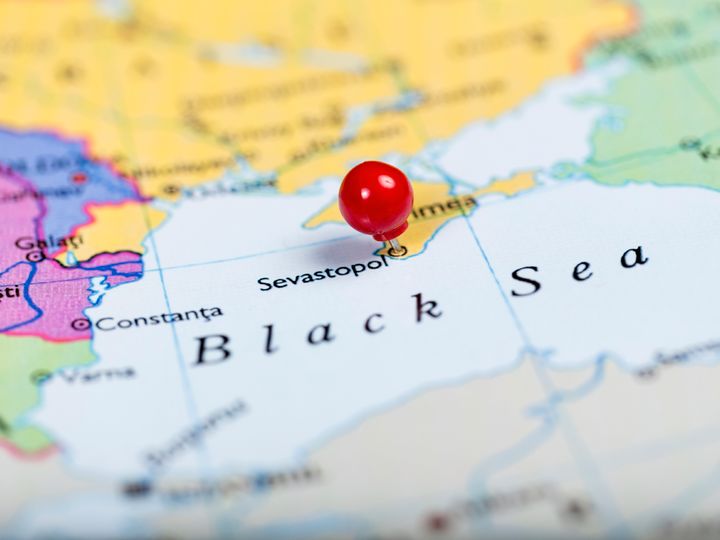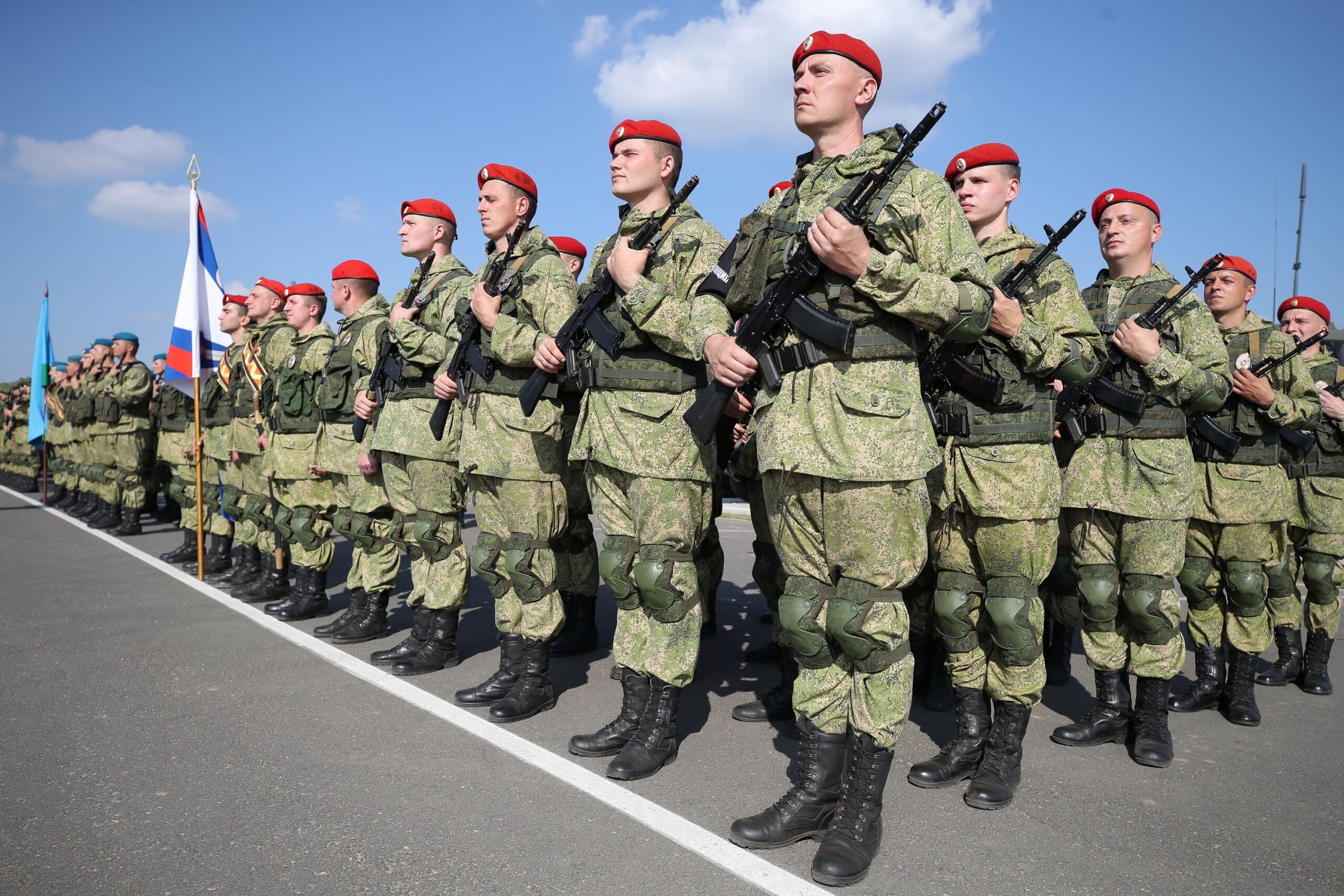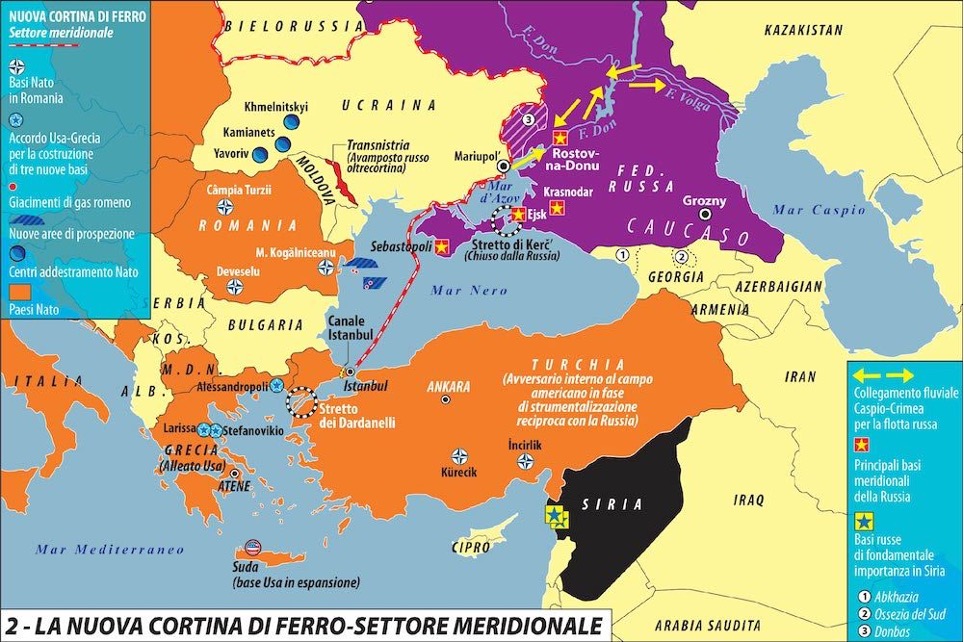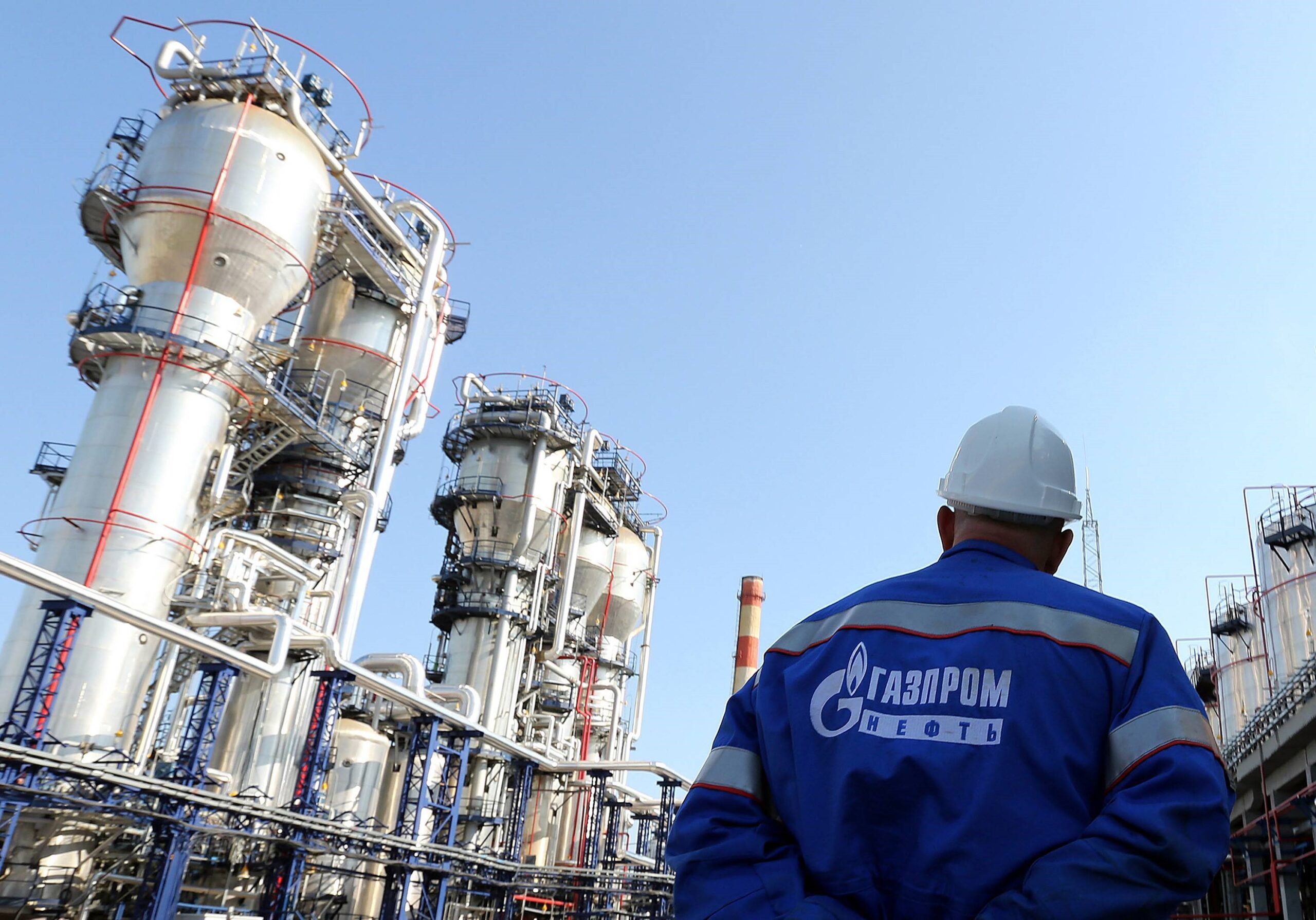The aftermath of the annexation of Crimea in 2014 has raised concerns of a return to an old-fashioned Cold War order. Theorists and observers argue that the world faces a tensive phase, comparable to the interbellum period or the Anglo-German rivalries pre-Great War (Cohen, 2014). Nevertheless, considering the particular object of the contention that triggered everything, there are consistent similarities with one of the most crucial modern age wars, the 1853 Crimean War. The situation on the eve of the Crimean War was a European order still based on a splintered but active Concert of Europe, and the terrible conditions of the hugest middle powers in the area, the Ottoman Empire (central power because by then the ancient might of Constantinople was already faded). Therefore, this presets global order, consisting of a group of significant forces interacting to solve the international crisis, broke the moment Russia attempted a “not legalized” expansion. An expansion that raised concerns mainly for Great Britain because it was afraid of the possible clashes of primary interests on geopolitical, military, economic, and, most of all, naval grounds.
The XIX century’s Western Powers, everyone with their plain or secret agenda, joined forces to hamper Russian ambitions towards the Mediterranean and the Straits. Moreover, to perform this scope, they hit the heart of Russian operations in Crimea. It happened even if the most populous and wealthy cities of Russia were along the Baltic, where the majority of the Imperial Army remained stationed and where the Tsar expected an attack. The deliberated Crimean attack vector meant not only to bring war near the casus belli provinces, but it was also a way to signal Russia. The latter utilized and would have used the Crimean bases as the bridgehead of further influence beyond the Bosporus, which the West (i.e., Great Britain) would not allow it. Already being slowly marginalized by European diplomacy even before the conflict, the Crimean War eliminated the problem of Russian interference on Western and Central European affairs for quite some time while St. Petersburg focused on inward improvements. Nevertheless, the most evident results were the disruption of all traditional alliances like the Austria-Russia one. Furthermore, it conditioned the East-West relationship falling for the first time into the descriptive rhetoric of the “Us versus Them.” Western European diplomacy persisted using something that the Soviet Union inherited and the aggravating factor of being a communist state (Mearsheimer, 2001).
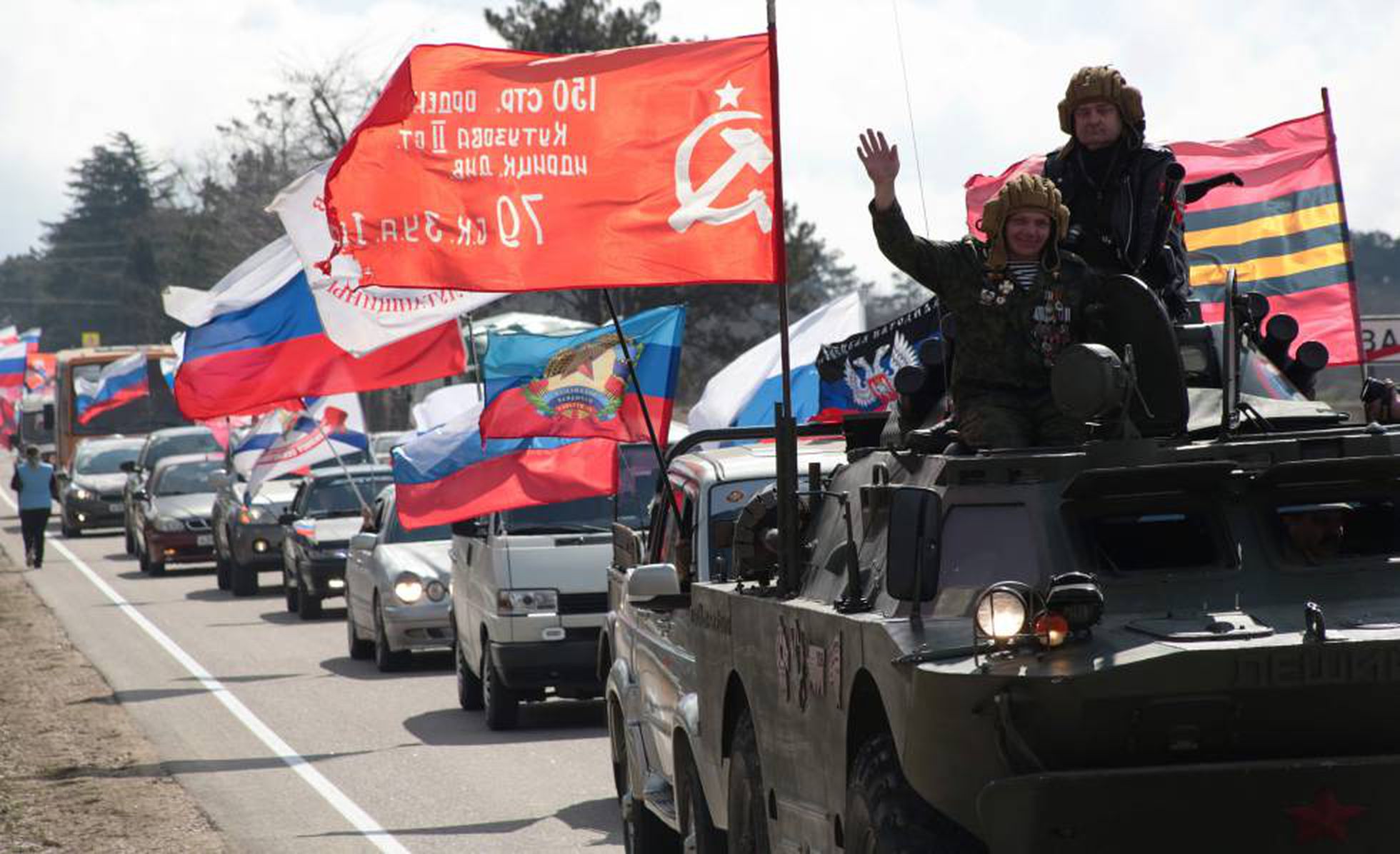
After the dissolution of the USSR, the international order changed drastically. For a moment, it was verisimilar a realization of a global liberal order based on a Western-like democracy. However, this democratization was not as swift as predicted. In addition, “the transformation of the international system, joined to given internal developments of the democratic societies, put and is putting pressure also to the stable Western democracies” (Panebianco 1998). In this context, the West expected Russia to streamline and rejoin in a comprehensive and idealist Western hemisphere, parallel thinking that illuded the Restoration architects and the 1815 Congress of Vienna. Instead, the realization of such an impossible outcome and the formation of an independent Russian foreign policy tended towards a Mediterranean agenda but not only produced the very same effect that had in 1853. The entire West did not even need to establish an ad hoc coalition this time as NATO was already pressing the area. By expanding towards Ukraine, NATO aimed directly at hindering the security of Halford Mackinder’s Heartland (Mackinder 2004) and Russian power projection. Naturally, in the XXI century, conflicts are not anymore fought only with a rifle and a good general. Nonetheless, the demise of all Crimean bases, in this case, because of a NATO-oriented Ukraine, means the same today as it meant 150 years ago: the loss of the Black Sea Fleet shield and the exposure of the Bear’s underbelly.
The West willingly or unwillingly is molded by a bias, a geopolitical myth one could say, regarding Russian expansionism of which the first stirrings emerged just before the Crimean War. As the Congress of Europe crumbled after the 1856 Treaty of Paris, the post-Cold War order crumbled when the Kremlin accepted the Crimean request to join the Russian Federation. In both cases, the result was an isolated but not weaker Russia concentrated on its agenda in a multipolar world. The United States, through NATO, tried to absorb the Russian surroundings and Russia itself. When the attempt failed persisted in a containment policy, illogical and provocative in the contemporary multipolar world, which is evolving more towards a new balance of sphere’s diplomacy. The USA and its allies failed to perceive Russia as a power of the same rank but at the exact times feared it and acted to neutralize it as swiftly as possible. Perhaps, the legacy of the Soviet Union was alienated. Western policymakers or Russian initial “silent” (not so silent as shown in the second chapter) compliance with the NATO\EU enlargement plan convinced them to push forward carelessly.
In any case, the steady transition towards more nationalist rhetoric over the Russian\Soviet former land produced widespread grumbling in Washington and the other European capitals. However, Putin altered this kind of language with ideas that nationalists would unearth disagreeably. The parallel with Nicholas I come naturally as the Tsar never hid such Slavophile thoughts before and during the Crimean War, considering that the conflict technically started because of Orthodox faithful, id est mainly people of Slavic ethnicity (and Greeks as well). Despite his beliefs, the Tsar “never endorsed the Slavophiles’ urge to topple Constantinople and did not provide the full-fledged assistance expected by the Slavophiles for the Slav and Orthodox revolutionaries, just as Putin did not act on nationalist expectations by sending troops to eastern Ukraine” (Tsygankov 2015), or by allowing Crimea annexation. Vladimir Putin shares some political views with Alexander I. A typical example comes from the speech of the Tsar dedicated to Finland’s accession into the Russian Empire, which touches many points made in Putin’s Crimean speech. Both these speeches refer that the local population will not receive any more repression. They both accuse the main engine of diplomatic, political, and military action of their respective times: France for Alexander I and NATO for the President of Russia. The preference of a pacific accession of the territories is emphasized in both speeches as the Tsar remarked that: “According to the immutable fate of the Highest, blessing Our weapons, having forever annexed Finland to Russia, We saw with pleasure the solemn vows brought by the inhabitants of this land to their Russian citizenship, faithful and eternal to their Scepter. Together with this, We have taken upon ourselves the sacred duty of preserving this heritage, entrusted by our providence, in all its inviolability and indispensable and eternal unity with Russia” (Газета.Ru, 2014). While Putin said: “In the heart, in people’s minds, Crimea has always been and remains an integral part of Russia. This conviction, based on truth and justice, was unshakable, passed down from generation to generation, before it was powerless both time and circumstances, powerless are all the dramatic changes that we experienced, our country experienced throughout the twentieth century.”
The similar practical way of expressing an issue of two similar events separated by more than a hundred years is remarkable. It confirms that Russian rhetoric is recursive with a specific pattern. Finland represented a buffer zone to the vulnerable Tsarist capital, and Russia acted to acquire it. The same can be said for Crimea: the first was a unilateral expansionist act in XIX politics; the second was defensive in a multipolar international order.
 To introduce another historical and atypical similarity, Crimea could be epitomized as a terra irredenta, which Russia lost with the demise of the USSR. The word originates from the Italian Unification process and means unredeemed territory, with an intrinsic meaning of lacking some specific land to complete the national unity. Moreover, in the Russian Federation, the standard way to address the 2014 events is “Vossoyedineniya Kryma“, which translates into “the Reunification of Crimea“, and there is also a celebration day (РИА Новости 2021).
To introduce another historical and atypical similarity, Crimea could be epitomized as a terra irredenta, which Russia lost with the demise of the USSR. The word originates from the Italian Unification process and means unredeemed territory, with an intrinsic meaning of lacking some specific land to complete the national unity. Moreover, in the Russian Federation, the standard way to address the 2014 events is “Vossoyedineniya Kryma“, which translates into “the Reunification of Crimea“, and there is also a celebration day (РИА Новости 2021).
Naturally, the main difference between the two events is that today’s Russia has a different international acquis than the Russian Empire, distant from the classical dichotomies of the mid-XIX century. The forces of resistance are structured on more levels than the direct military confrontation. While in 1854, the British almost total monopoly of the Mediterranean was endangered by the Black Sea Fleet. Nowadays, there are plenty more external and distant actors that play a role. The interconnection among foreign interests but on a local scale enlarged the problem of East-West confrontation. It radicalized the issue on a global level, something that was not present during the age of the Concert of Europe. Contemporary actors such as China contribute in “infiltrating” through allowed international channels and create a more tensive situation based not on naval power but on economic means to create a solid soft power area of action. For example, by using the Belt and Road Initiative or the new silk road [I]. The Mediterranean, in particular, is not anymore the commercial ambition of both Tsar Nicholas and Queen Victoria but presents a multitude of stakeholders that make it very difficult to predict outcomes. Russian interventions in Syria and recently in Libya clashes with local, European Union, France, Italy, China, Turkey, Egypt, Israel, and USA interests, a very different situation from the old binomial London-St. Petersburg clash. Therefore, reacquiring Crimea into the Russian basket also these considerations over a crowded Mediterranean theatre and an inevitable confrontation with the West hemisphere and Beijing.
As the West failed to recognize Ukraine as central in Russia’s security, and a Ukraine split in two facilitated this interpretation, it tried to transform Kyiv into a bastion against the allegedly unreceptive Moscow, which reacted accordingly. The West did not intervene with all its means to protect Ukraine, as France and the United Kingdom did not intervene in aid of the Ottoman Empire for the mere sake of protecting the Turks from the Tsar aggression. Ukraine/Crimea and the Russian pursuits in the area condensed a fear for Russia in both events and even before as the Western Powers, modern and contemporary. It incentivized the enlargement of NATO and the EU and pressed on Russian strategic issues. The same concern produced by the unwelcome competition in the Mediterranean Sea routes drove the United Kingdom to stop the maritime expansion of the Nicholas I. Moreover, as said above, fear is a crucial motor of international relations according to Realism. The Black Sea region has re-acquired importance and turned into a zero-sum game between the Russian Federation and the United States (Delanoë 2014). The Russian power projection in the Mediterranean represents another critical interest for Moscow, even more than it was for St. Petersburg. Now, with a globalized world maintaining control of sea routes is crucial. Russia now has partners in the Middle East and on the shores of the Persian Gulf, thus a particular necessity in power projection. The Black Sea is a critical energy export route to Europe as one-third of total oil is transported by oil tankers transiting there. The only means to protect these assets has a powerful and capable forward base, and that has always been Crimea. It is why the Kremlin ultimately gambled and proceeded with recognizing the independence of the Republic of Crimea and allowed its accession to the Federation. Without Ukrainian or Western influences, it could also have upgraded and modernized all the bases and the naval dockyards of the Peninsula. A Russian Sebastopol could augment the Kremlin’s military power other than provide sovereignty rights, thus allowing the installation of coastal missile defenses, early warning radars, or the deployment of strike aircraft. It could effectively turn Crimea into an unsinkable carrier that meticulously controls an airspace radius of over 1000 kilometers, meaning the entire Black Sea and Ukraine. After the Crimean War, Russia briefly lost its predominance on the Black Sea, quickly reestablished. By acquiring Crimea in 2014, Russia returned to a leading position in an area of prime importance for its security.
With the annexation, the unipolar American dream collapsed officially. Already thwarted by the new millennium economic boom of China, India, and other BRICS countries, any resemblance of a hegemonic post-Cold War order faded. In the same way, “there was no potential hegemon in Europe between 1815 and 1902 [because] none of them possessed an army that was powerful enough to overrun Europe. Nor did any of them come close to having enough latent power to qualify as a potential hegemon” (Mearsheimer 2001). Likewise, in the second decade of the XXI Century, no army possesses the military capabilities, nor any country has the economic means to establish a predominance successfully. Moreover, the nuclear option is not applicable without incurring a despicable MAD scenario (Mutual Assured Destruction). Therefore, from apparent unipolarity, the Crimean Annexation changed the perspectives on the international order. Crimea represented the catalyst of two different international transformations that overturned the preset diplomatic environment and created a new factual status quo.
When given the opportunity in Crimea, the preference of a significant nuclear power like Russia to spontaneously expand assumes a different light under realists’ assumptions. Russian leadership idea was that intervention in Crimea, in a more and more Western-oriented Ukraine, would make the country more secure as a whole, including also the other essential factors described in the previous sections. During the years, Vladimir Putin often despised the attempts to establish a unipolar world, even reaching the point of addressing the demise of the Soviet Union as “the greatest geopolitical catastrophe of the century” (NBC News 2005). Therefore, Russian intervention could be interpreted as a move in order to maintain the status quo. The Kremlin never stopped to criticize the subordinated position superimposed by other Western members of the international community. It complained especially about some particular critical issues like the eastbound enlargement of NATO. Russian preemptive action could be framed as a defensive action, “Putin’s last stand,” which excludes any post-imperialist ambition and focuses on respecting his country’s values and interests (Tsygankov 2014). The imperialist agenda is excluded as the Kremlin did not recognize the referendum in the alleged Republics of Donetsk and Luhansk [II] unilaterally, aligning to the Crimean modus operandi. Besides, the same can be affirmed for the not universally recognized Republics of Abkhazia and South Ossetia.
Nevertheless, the West perceived Putin’s Russia as a revisionist and destabilizing power since the Georgian War, but only with the “illegal” Crimean annexation, the situation reaches a breaking point. Washington, Brussels, and London accuse the Kremlin of targeting the well-established international post-Cold War order. On the contrary, the Kosovo experience does not offer such an outcome. The two opposed visions produced a challenging security dilemma due to the interconnecting external and internal factors that characterize the Ukrainian case (Averre 2016). The dealings in Ukraine delegitimized the East-West talks. They exacerbated the Russian bitterness over the virtual unipolar order in Europe and the surrounding areas, ignoring the possibility that the Kremlin could perceive it as unfair and limiting towards a collective future (Krastev and Leonard 2014).
The pathological “encirclement syndrome” of which Russia is affected is not a direct consequence of the Western policies (Simms and Fitzgerald 2014), but since the 2000s, the West did not alleviate the symptoms. In the longer term, the resolution of this and other possible conflicts reside in a fundamental reconsideration of the geostrategic and historical causes that brought to this point. This approach includes an all-comprehensive talk over European security, understanding the shared fears (International Crisis Group 2020), the realist catch-word is not a case, and reaching a common ground of mutual understanding. The first option towards this path could be to unblock the Minsk II [III] stalemate and adopting an incremental reciprocal adoption of the provisions in the document, one by one. It could be tied to a contextual and progressive removal of the sanctions. This approach does not include any punitive approach and is way more resolutive than Washington’s current, rigid, all-or-nothing methodology that alienates Moscow from the dialogue (International Crisis Group 2020). As Henry Kissinger brilliantly summarized in the aftermath of the Ukrainian event:
“Far too often the Ukrainian issue is posed as a showdown: whether Ukraine joins the East or the West. But if Ukraine is to survive and thrive, it must not be either side’s outpost against the other — it should function as a bridge between them. Russia must accept that to try to force Ukraine into a satellite status, and thereby move Russia’s borders again, would doom Moscow to repeat its history of self-fulfilling cycles of reciprocal pressures with Europe and the United States. The West must understand that, to Russia, Ukraine can never be just a foreign country. Russian history began in what was called Kievan-Rus. The Russian religion spread from there. Ukraine has been part of Russia for centuries, and their histories were intertwined before then. Some of the most important battles for Russian freedom, starting with the Battle of Poltava in 1709, were fought on Ukrainian soil. The Black Sea Fleet — Russia’s means of projecting power in the Mediterranean — is based by long-term lease in Sevastopol, in Crimea […] The Ukrainians are the decisive element. They live in a country with a complex history and a polyglot composition. The Western part was incorporated into the Soviet Union in 1939 when Stalin and Hitler divided up the spoils. Crimea, 60 percent of whose population is Russian, became part of Ukraine only in 1954, when Nikita Khrushchev, a Ukrainian by birth, awarded it as part of the 300th-year celebration of a Russian agreement with the Cossacks. The west is largely Catholic, the east largely Russian Orthodox. The west speaks Ukrainian; the east speaks mostly Russian. Any attempt by one wing of Ukraine to dominate the other — as has been the pattern — would lead eventually to civil war or break up. To treat Ukraine as part of an East-West confrontation would scuttle for decades any prospect to bring Russia and the West — especially Russia and Europe — into a cooperative international system. Ukraine has been independent for only 23 years; it had previously been under some kind of foreign rule since the 14th century. Not surprisingly, its leaders have not learned the art of compromise, even less of historical perspective. The politics of post-independence Ukraine clearly demonstrates that the root of the problem lies in efforts by Ukrainian politicians to impose their will on recalcitrant parts of the country[…]. A wise U.S. policy toward Ukraine would seek a way for the two parts of the country to cooperate with each other. We should seek reconciliation, not the domination of a faction. Russia and the West, and least of all the various factions in Ukraine, have not acted on this principle. Each has made the situation worse. Russia would not be able to impose a military solution without isolating itself at a time when many of its borders are already precarious. For the West, the demonization of Vladimir Putin is not a policy; it is an alibi for the absence of one (The Washington Post 2014)”.
The expert American diplomat offers an incredible and wise opinion that aligns a balance of power diplomacy with a deep understanding of how the current international system works, giving equal and absolute importance to past and present factors.
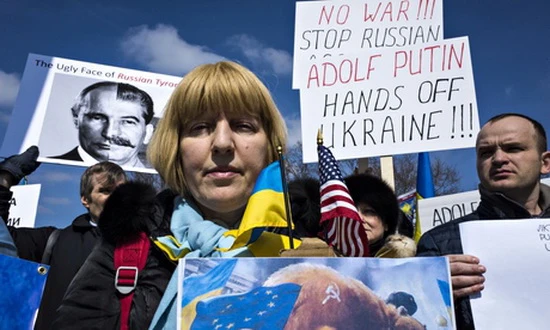
Indeed, history suggests an exit strategy with the case of post-World War Two Finland. With the Friendship pact of 1948, Moscow imposed a rigid nonalignment policy on Helsinki, which included a defensive pact in case of aggression on both sides. This status created in the doctrine of the term “Finlandization” retains uncertain origins. The circumstances were depicted for the first time in 1953 by the Austrian Foreign Minister Karl Gruber, to remark his country to not adhere to the Finnish example. However, the actual term was coined by Professor Richard Lowenthal in 1966, when in a Warsaw Pact summit in Bucharest, it was suggested the disbanding of all blocs (Laqueur 1977). While the concept of Finlandization is traditionally associated with a severe limitation of sovereignty, it could instead be a valid alternative to a restructuring of the world order with an eye to realist and realpolitik assumptions (Di Rienzo 2015). This approach could favor a West-East rapprochement on the Ukrainian conundrum as Finland is well placed within the Western hemisphere, being a Member of the EU but outside NATO and in close economic partnership with Russia. In a framework of necessities and conditions of the third millennium, considering Ukrainian peculiarities, the replication of such a deal could offer a valuable and longstanding solution to the problem.
Within this context, the European Union and its central Member States could be the locomotive of these new approaches as the ones mainly interested in the matter and in recalibrating the security of Europe more broadly. One possible precondition is untying the Union’s security from the national militaries and creating a univocal apparatus that could offer a solid third pole in the matter, not in the framework of NATO. In their policy of deterring Russia, the Alliance does and will not risk direct military confrontation, but, in its place, it prefers to undermine the political will of the opposite side by raising the socio-economic cost of preserving the established containment policy (Bolgova 2018). In any case, the European Union is tasked to act with lucidity and steadiness, realizing the complex reality at its Eastern border because the substantial risk of excluding Russia from the European equation is real and could bring serious consequences (Krastev and Leonard 2014). The burden on Brussel as a guilty part of the problem does not mean it cannot also be the pillar of a solution, which accommodates a complicated problem existing and perduring since the XIX century and that maybe only contemporary politics can solve.
In conclusion, the contemporary consequences are the rupture of the post-Cold War order and new diplomatic normality based on tension, sanctions, and military pressure: an unviable routine used in today’s globalized planet that resembles the times of Brezhnev and Nixon. Moreover, the influence of the economic damage, especially the European Union, allied of the United States but also a leading partner of Russian import/exports and crucial recipients of Gazprom’s hydrocarbons. The rivalries between two different economic blocs, the EU, and the Eurasian Economic Union, have been exacerbated and driven to the point that they are seen as rivals. This outcome did not consider the economic backlash, and it could even damage the Euro-Atlantic relations since the European Union is perfectly conscious of its energy dependence on Russia. The Nord-Stream 2 deadlock was a perfect example of these drawbacks [IV]. Nowadays, relations are completely frozen on nearly all fronts. The recent developments on mutual diplomatic personnel expulsions (La Repubblica 2021) do not prospect any distention, as NATO pushes forward in the Black Sea area and Russia shows its military capabilities in return. It is an anachronistic dialogue in a multipolar world, and it possesses many already established great Powers and risks escalating the situation into a conflict.
[I] It is a strategic initiative of the People’s Republic of China to improve its trade links with countries in Eurasia. It includes the landlines of the “economic zone of the silk road” and the “maritime silk road of the 21st century”. The areas developed are China, Central Asia, North Asia, Western Asia, and the countries and regions along the Indian Ocean and the Mediterranean. Starting from developing transport and logistics infrastructures, the Chinese strategy aims to promote its role in global trade relations, favoring international investment flows and commercial outlets for Chinese production (Ivona 2020).
[II] The Donetsk People’s Republic (DNR) and the Luhansk People’s Republic (LNR) are two unrecognized self-declared independent states located in the Donbas region of eastern Ukraine. Internationally, they are recognized as constituent regions of Ukraine, but they engaged in a civil war with the central government of Kyiv. They proclaimed their independence after the 2014 Ukrainian crisis. Only South Ossetia, another not recognized state entity in the Caucasus, has official diplomatic relations with them as both DNR and LNR have no proper embassies in any other state (Fischer 2019)
[III] The Minsk Protocol on the results of consultations of the Trilateral Contact Group, or commonly known as the Minsk Protocol, is an agreement to halt the war in the Donbas region of Ukraine, signed by representatives of Ukraine, the Russian Federation, the Donetsk People’s Republic, the Luhansk People’s Republic, and the OSCE the 5 September 2014. The agreement, which followed multiple previous attempts to stop the fighting in the Donbas, implemented an immediate ceasefire. However, it failed to stop the fighting in Donbas and was thus followed with a new package of measures, called Minsk II, which was signed the 12 February 2015. This new agreement failed to stop the fighting, but the Minsk agreements remain the basis for any future diplomatic resolution of the conflict, as agreed at the Normandy Format meeting. The Normandy Format or Normandy Quartet talks involve the representatives of four countries, Germany, Russia, Ukraine, and France, who met informally during the 2014 D-Day celebration in Normandy and aimed to resolve the war Donbas. After the Second Protocol, the fighting generally subsided after the ceasefire came into effect on 15 February, but skirmishes and shelling continued in several parts of the conflict zone. By 16 February, Minsk II seemed on the verge of collapse. Separatists continued a heavy assault, and both sides said they would not withdraw heavy weaponry as specified by the agreement while fighting was still widespread. The new package of measures was born to give new impetus to an agreement between the contenders, but its follow-up for years did not go beyond the consolidation of a new armistice. Only 9 December 2019, a new summit of the Normandy Quartet in Paris unlocked an exchange of prisoners and foreshadowed a constitutional change guaranteeing broad autonomy to Ukrainian Russian speakers (Åtland 2020).
[IV] The Nord Stream 2 gas pipeline is an infrastructure project, started in 2018 and now nearing completion, which would allow Gazprom to double the current capacity of the Nord Stream Baltic gas pipeline that connects the Russian city of Vyborg, in Karelia, with the terminal located in the German city Northern Greifswald. This would allow the Petersburg-based company to consolidate its leading role in the European natural gas market, something controversial in the highly competitive European market. For this reason, since its design, it has sparked a widespread international debate and there has in fact been a lot of opposition to the entry into operation of the pipeline. Among the first and most vigorous opponents of the project were the US presidents Barack Obama, Donald Trump, and also Joe Biden recently stated that the NordStream2 is a bad idea. The argument is well known: if it is true that Nord Stream 2 would allow the inflow of more energy at relatively lower costs for European consumers (primarily Germans) when crossing the Baltic Sea, it is also undeniable that it would end up almost replacing quite the other great Russian gas route, namely the Eastern European one through Ukraine. The important detail is that, precisely because of the transit of Russian gas in Ukrainian sovereign territory, Gazprom has so far been obliged to pay substantial royalties to the government of Kyiv. The same executive that for the past 7 years has been engaged in a costly military campaign against pro-Russian separatists in Donbas under the banner of the self-proclaimed Donetsk and Lugansk people’s Republics and that lost Crimea itself. For more see: Gazprom Website, ‘Nord-Stream 2 infographics’. And Deutsche Welle, ‘Russia’s Gazprom to Pay $2.9 Billion in New Ukraine Gas Deal’, 21 December 2019.

